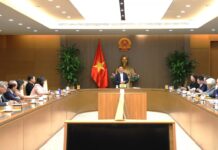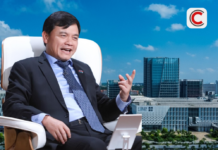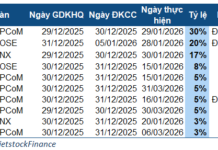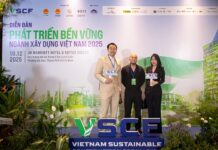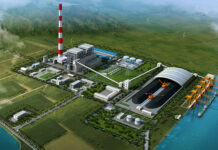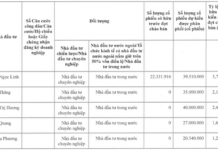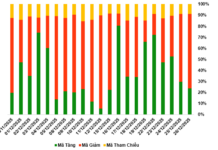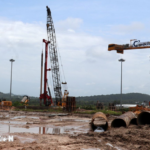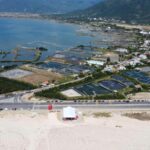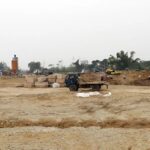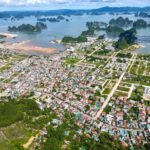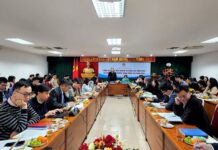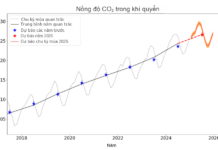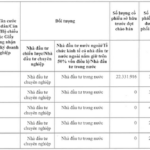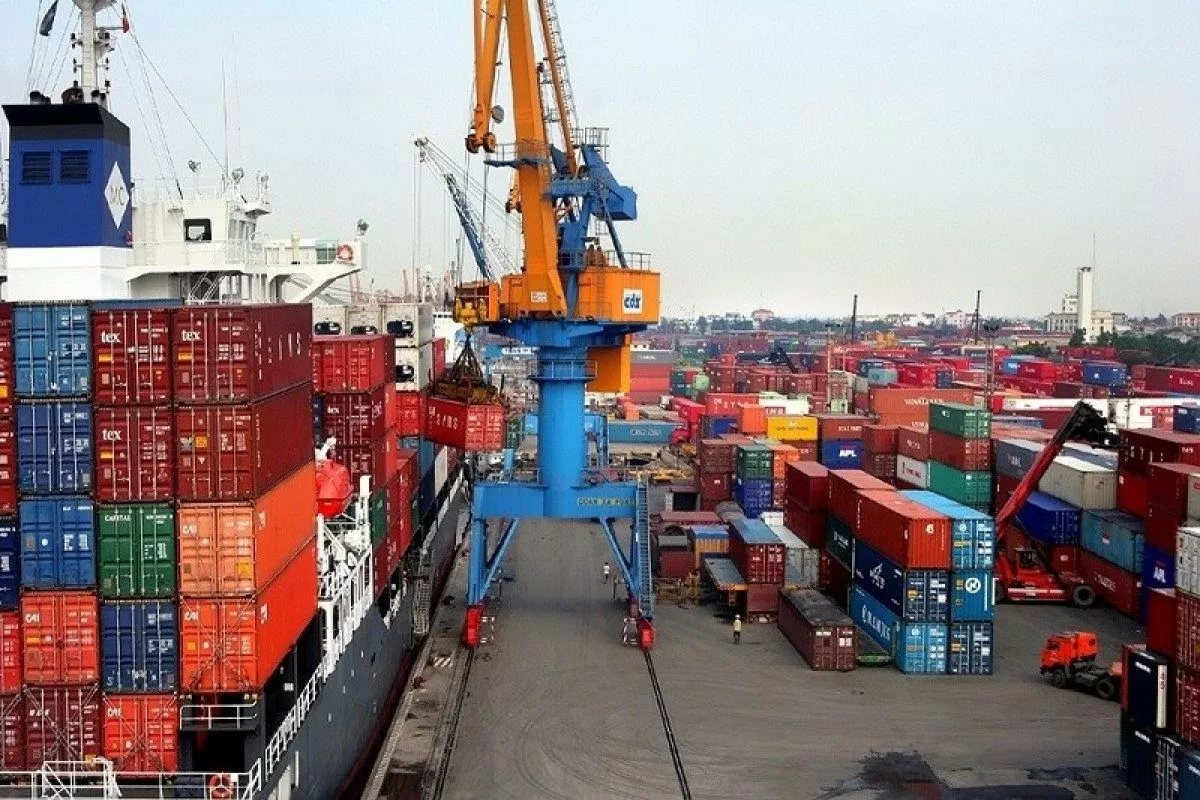According to the Khanh Hoa Provincial Electronic Information Portal, on the morning of September 17th, a delegation from the Standing Committee of the National Assembly’s Science, Technology, and Environment Committee, led by Mr. Le Quang Huy—a member of the Party Central Committee and Chairman of the Committee—conducted an inspection of the implementation of Resolution No. 189/2025/QH15 dated February 19, 2025. This resolution outlines special mechanisms and policies for investment and construction of nuclear power projects in Khanh Hoa.
The delegation included Mr. Ta Dinh Thi, Deputy Chairman of the Committee, members of the Standing Committee, and leaders from several central ministries and agencies. Representing Khanh Hoa Province were Mr. Trinh Minh Hoang, Vice Chairman of the Provincial People’s Committee, and Ms. Dang Thi My Huong, Deputy Head of the Provincial National Assembly Delegation, along with leaders from relevant departments and agencies.
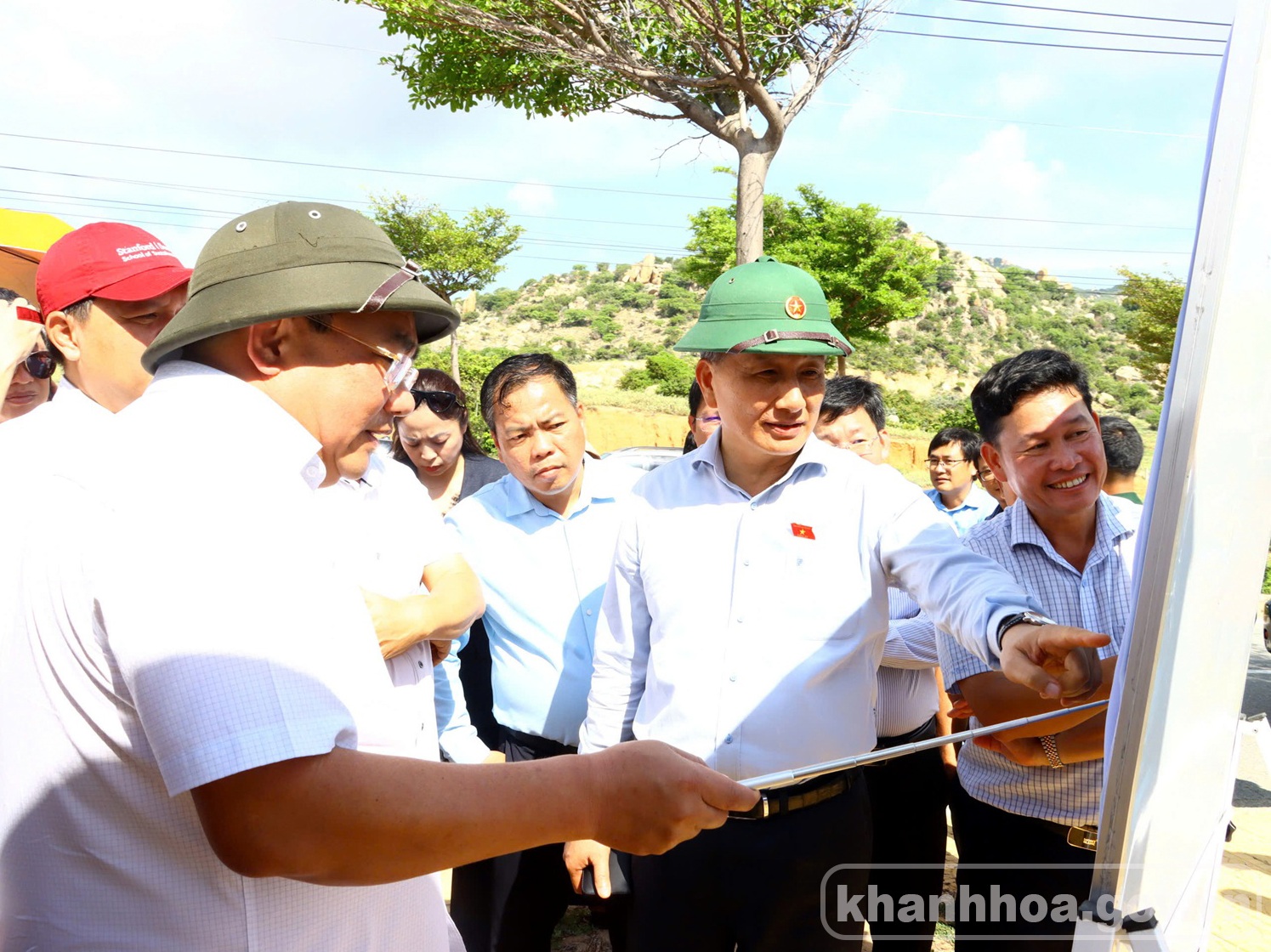
The delegation inspects the planned site for Nuclear Power Plant No. 1 and No. 2. (Photo: Khanh Hoa Provincial Electronic Information Portal)
Land Clearance Progress Faces Significant Challenges
The delegation directly inspected the planned sites for Nuclear Power Plant No. 1 in Phuoc Dinh Commune and Nuclear Power Plant No. 2 in Vinh Hai Commune before meeting with the Khanh Hoa Provincial People’s Committee, Vietnam Electricity (EVN), and the National Industry-Energy Group.
During the meeting, representatives reported on project preparation and the implementation of special mechanisms and policies under Resolution 189.
Reports indicate that land clearance for both projects has largely completed land and asset inventories, including gravesites, but faces numerous obstacles. For Plant No. 1, covering over 485 hectares, 491 households have been inventoried, with approximately 45 households still requiring land origin verification.
Plant No. 2, spanning over 643 hectares, has inventoried 534 households, 3 organizations, and nearly 3,000 graves, with over 2,000 eligible for compensation. However, progress remains slow due to insufficient personnel at the commune level, complex land records, post-merger land price fluctuations, and inconsistent guidance on safety distances for nuclear power plants.
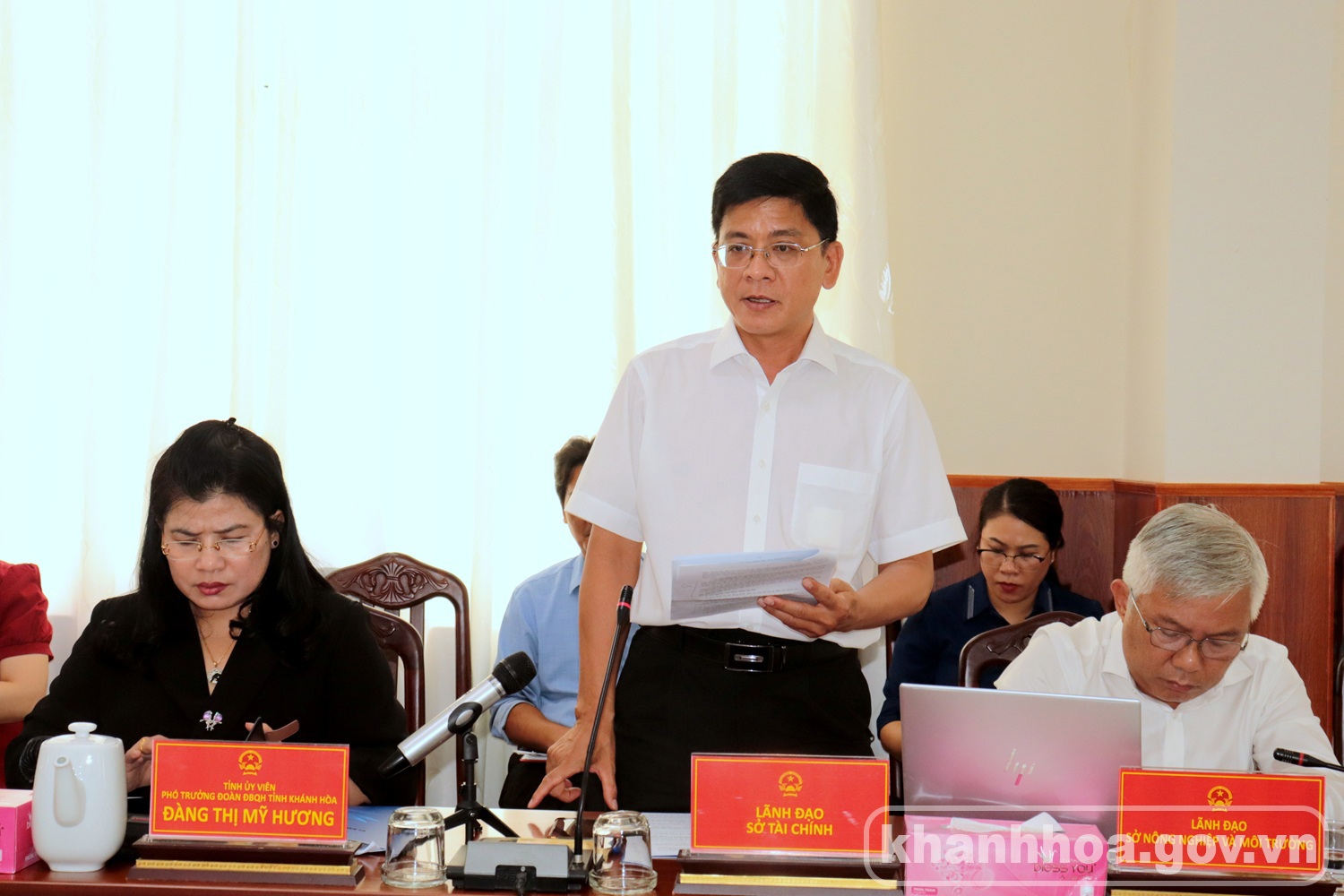
The Director of the Department of Finance, representing the Khanh Hoa Provincial People’s Committee, reports on land clearance progress and investment policies for the nuclear power project. (Photo: Khanh Hoa Provincial Electronic Information Portal)
To address these issues, the Khanh Hoa Provincial People’s Committee has proposed that the central government allow land clearance, resettlement, and relocation to be treated as an “independent project” led by local authorities. They also urge the swift allocation of the remaining VND 9.1 trillion in central budget funds for compensation payments and resettlement infrastructure investment.
Additionally, the province proposes special mechanisms, such as allowing direct procurement for certain compensation and resettlement packages, and concurrently implementing resident support measures alongside project adjustments and construction.
Khanh Hoa also seeks priority funding for transportation and healthcare infrastructure development, tuition waivers for children in the project area, and special social welfare policies for displaced households.
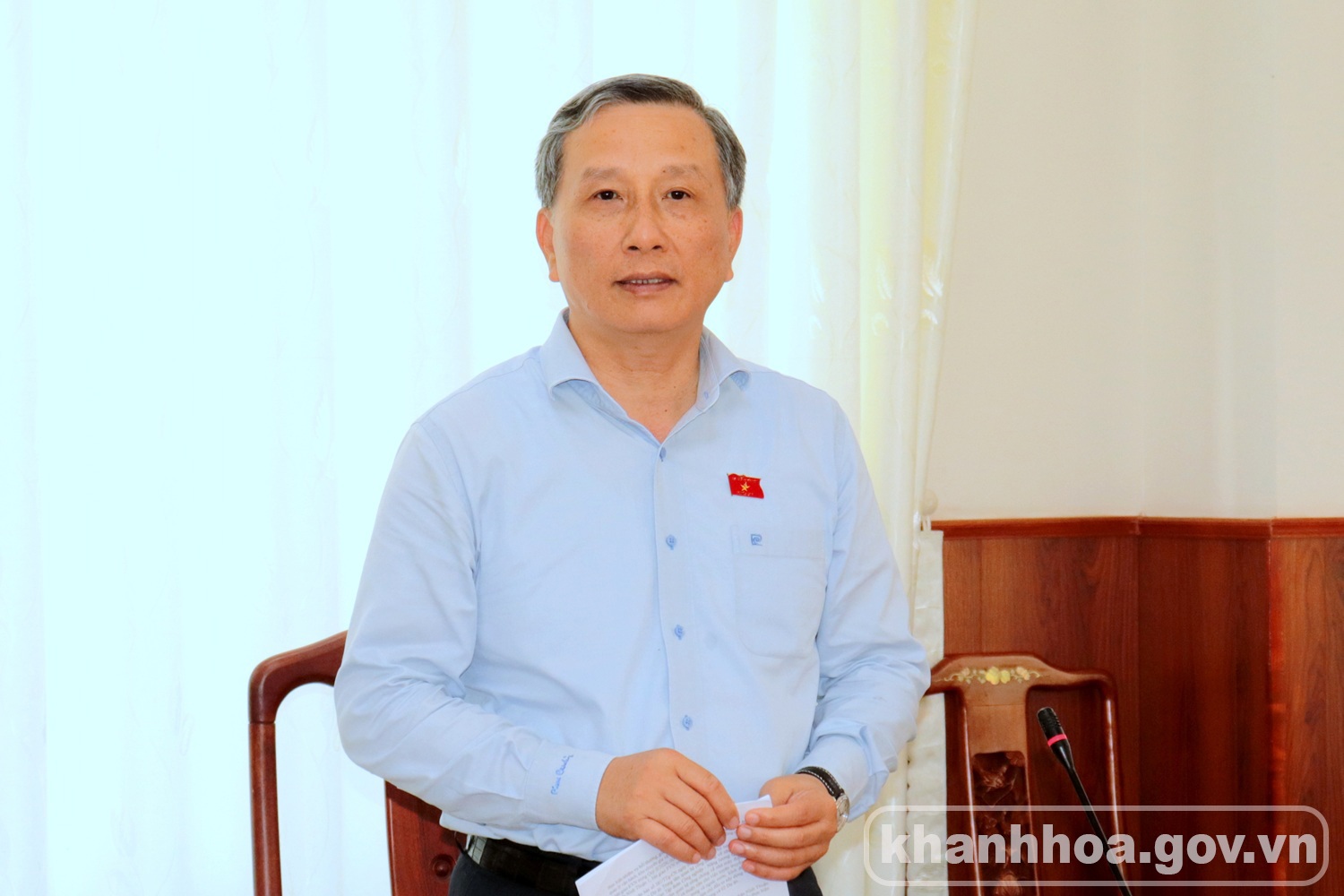
Mr. Le Quang Huy, Member of the Party Central Committee and Chairman of the Science, Technology, and Environment Committee, delivers concluding remarks at the meeting. (Photo: Khanh Hoa Provincial Electronic Information Portal)
Based on the delegation’s feedback, Chairman Le Quang Huy requested that the Khanh Hoa Provincial People’s Committee urgently implement tasks within its jurisdiction, review and supplement information, and provide comprehensive data and assessments for the projects. A detailed report on project preparation and the implementation of special mechanisms and policies for nuclear power investment and construction must be submitted to the Science, Technology, and Environment Committee by September 20.
The report should include clear recommendations on specific provisions to resolve challenges and effectively implement National Assembly Resolution No. 189/2025/QH15.
Chairman Huy also urged the Ministries of Industry and Trade, Science and Technology, and Finance to closely coordinate with Khanh Hoa Province and project investors to establish unified mechanisms, policies, and consultations, ensuring the successful implementation of the nuclear power projects.
Vietnam’s First-Ever Nuclear Power Project
In 2009, the National Assembly approved the Ninh Thuan Nuclear Power Project, comprising two plants with a total capacity of 4,000 MW over 1,600 hectares. This project was not only a key energy initiative but also aimed to usher in a new era for Vietnam’s nuclear science and technology.
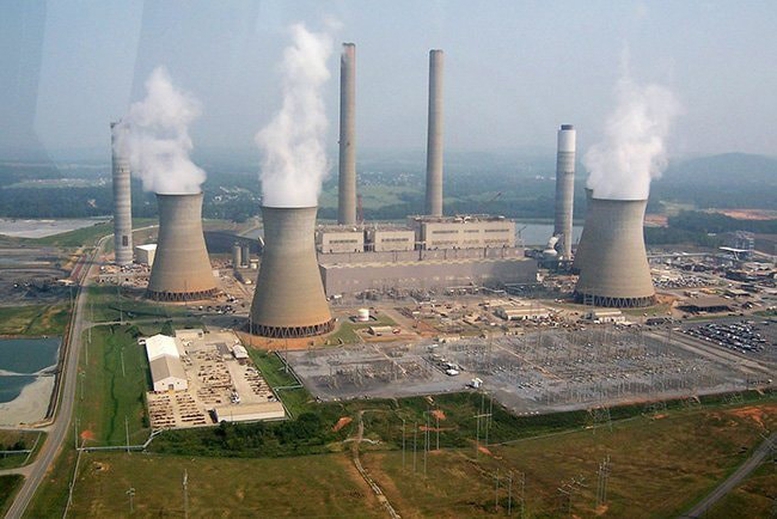
Rendering of the nuclear power project. (Photo: VGP)
However, in 2016, the project was suspended due to significant challenges: exorbitant investment costs, macroeconomic instability, and safety concerns following the Fukushima nuclear disaster in Japan.
Nearly a decade later, a pivotal moment arrived. On November 25, 2024, during the 8th Plenary Session of the 13th Party Central Committee, leaders agreed to restart the Ninh Thuan Nuclear Power Project and directed long-term research into Vietnam’s nuclear energy program. Just days later, on November 30, 2024, the National Assembly passed a resolution reaffirming investment commitments, marking a legal turning point for the project’s revival.
Simultaneously, the amended Electricity Law incorporated provisions related to nuclear power, and the government included the amended Atomic Energy Law in its legislative agenda to strengthen the legal framework for this specialized field. On December 5, 2024, General Secretary To Lam personally inspected the Ninh Thuan 1 Nuclear Power Plant site, emphasizing thorough preparation and swift implementation to avoid past delays.
Amid Vietnam’s rapidly growing electricity demand, the decision to restart the project is particularly significant. According to Power Development Plan VIII, by 2030, power capacity must reach approximately 150,000 MW, potentially exceeding 500,000 MW by 2050. With an average annual growth rate of 10%, the economy requires a stable and sustainable energy source.
Accelerating Land Clearance for APEC Infrastructure Development
Positioning Phu Quoc as an “International Trade and Tourism Special Zone” post-APEC will catalyze a new growth pole, significantly contributing to the shared prosperity of the Mekong Delta region.
Accelerating Post-Merger Growth: Khánh Hòa Seeks Bold Projects to Elevate Its Status as a Global Coastal Metropolis
Khánh Hòa, following its consolidation, continues to emerge as a captivating destination on the investment map. New directives from the central government, coupled with groundbreaking policies and special mechanisms, are unlocking unprecedented opportunities. This vibrant region is now poised to attract global “eagles” and mega-projects of exceptional caliber, propelling Khánh Hòa toward its vision of becoming a leading international coastal urban center.
Quảng Ninh Accelerates Land Clearance to Pave the Way for HDMon’s $1 Billion Mega Project in Vân Đồn Special Economic Zone
Amidst the accelerated land clearance efforts for projects in the Vân Đồn Special Economic Zone, the Monbay Vân Đồn project stands out with its nearly $1 billion investment.









